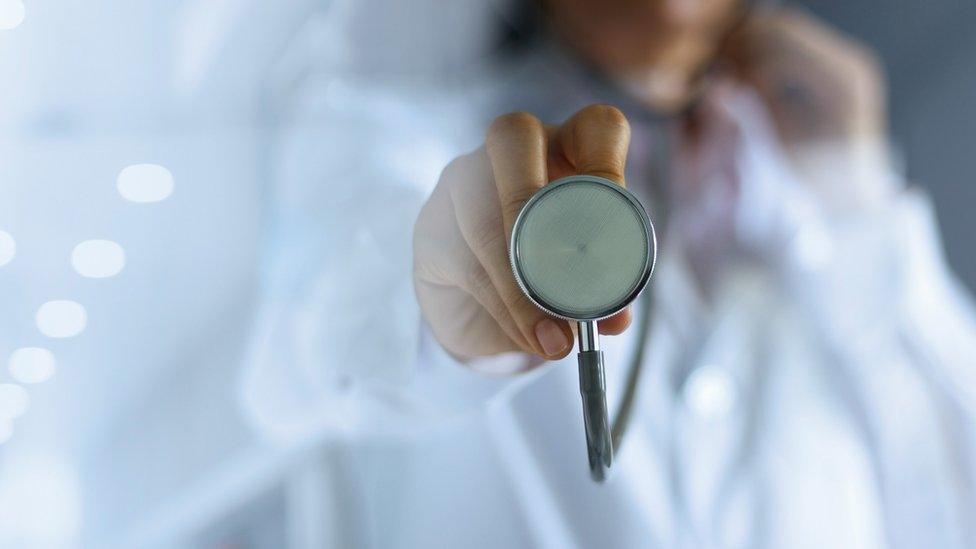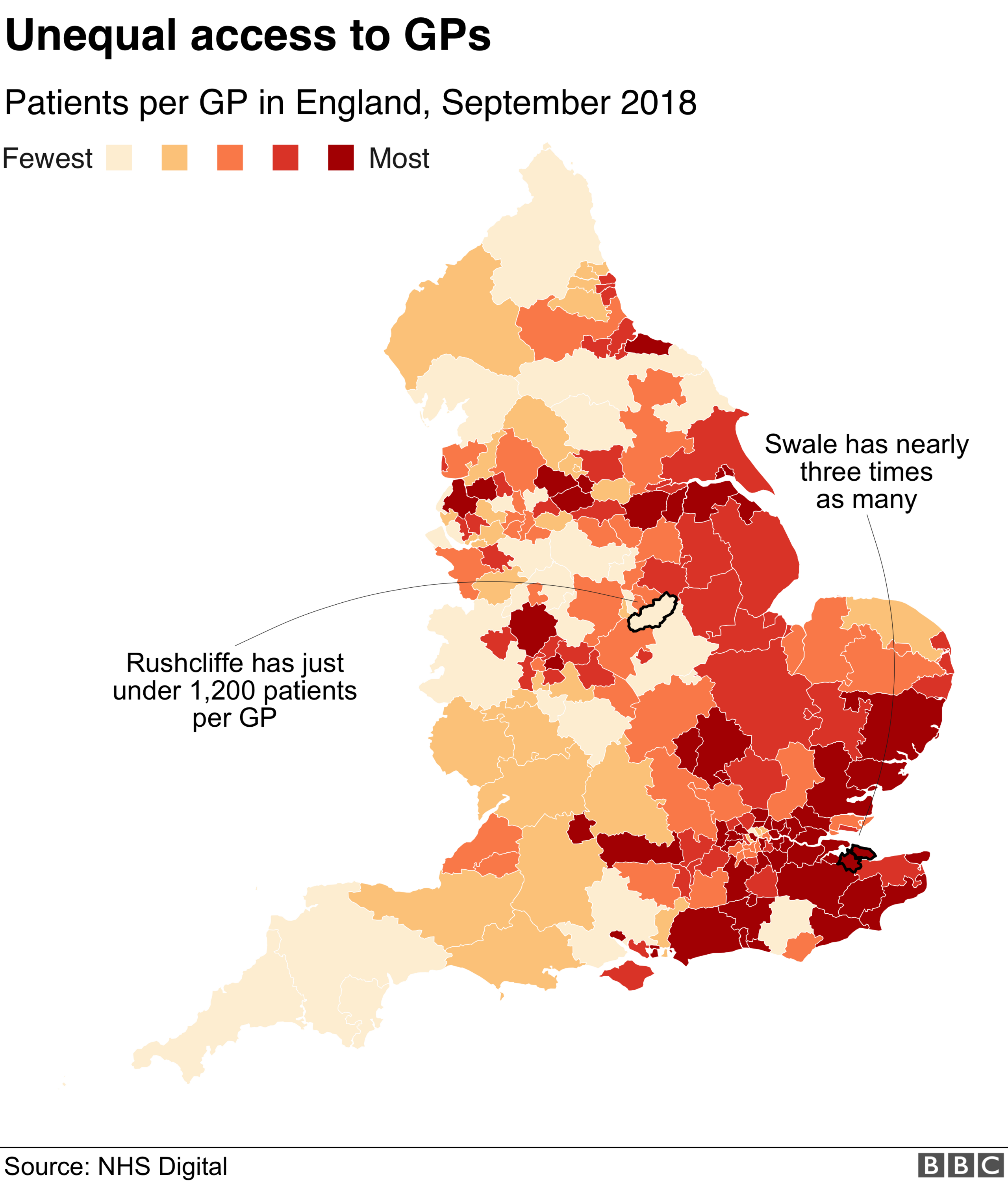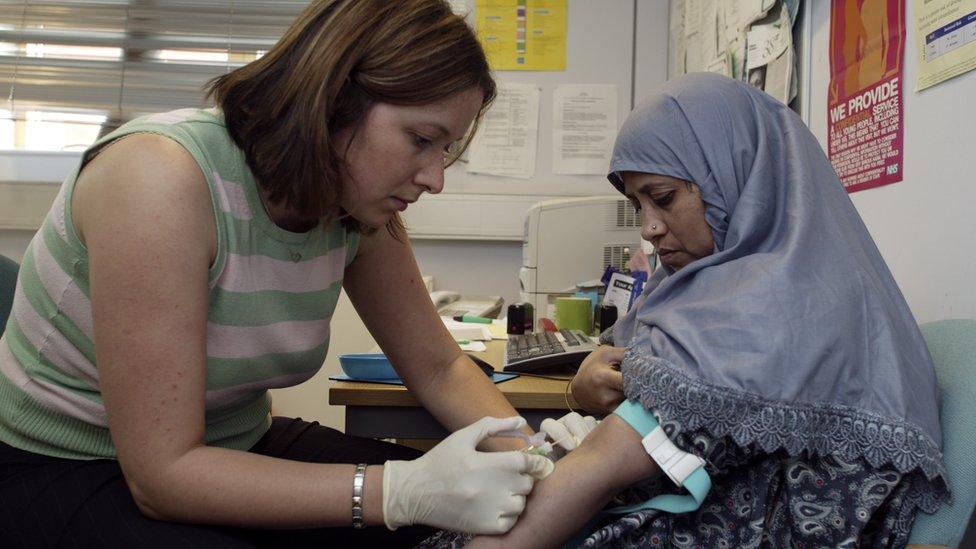Differences in GP access across England 'shocking'
- Published

The variation in the availability of GPs in different parts of England is shocking, doctors' leaders say.
A BBC analysis has found close to a threefold difference between the areas with the most and fewest doctors.
In one area - Swale in Kent - there is only one GP for every 3,300 patients, while in Rushcliffe in Nottinghamshire it is just under one for every 1,200.
The Royal College of GPs said the shortages put care at risk, but NHS chiefs said issues were being tackled.
More doctors are being trained and community services have been made a priority for investment under the 10-year plan announced earlier this month.
However, RCGP chairwoman Prof Helen Stokes-Lampard said none of that addressed the urgent problems the profession was facing.
She said the differences in the number of GPs was "shocking" and "surprising".
"It suggests there are areas of the country that are really struggling to get the GPs they need.
"Over the past decade, general practice has not received the investment it needs."
She believes the health service in England is 6,000 doctors short of what it needs - it currently has just over 34,000 - and the problems meant care was "not safe" in some places.
Patients Association chief executive Rachel Power said the findings were "worrying".
She said as well as risking safety, shortages also meant "increased difficulty in securing an appointment, and longer waits".
Which areas have the fewest GPs?
The analysis looks at the number of patients per GP in each local NHS area - known as clinical commissioning groups.
It shows a threefold difference between the areas with the most GPs and least.


Worst areas (patients per GP)
Swale: 3,342
Horsham and Mid Sussex: 2,997
Bradford City: 2,587
Thanet: 2,520
Bexley: 2,479
Best areas (patients per GP)
Rushcliffe: 1,192
Camden: 1,227
Liverpool: 1,283
North Derbyshire: 1,286
Corby: 1,369
Could there be valid reasons for the differences?
There is no official recommendation for how many patients a GP should have.
That is because the demand each patient places on their GP is different.
Older patients, young children or people with long-term conditions, such as diabetes, will need to see their GPs more than others.
If a doctor has a lot of these patients on their books, they will not be able to cope with as many patients.
That could be behind some of the differences that are being seen, but not all, the RCGP said.
Is the situation getting worse?

The data provided by NHS Digital only goes back to 2015.
In that time it shows the number of GPs being employed has fallen slightly while their patient population has increased.
For the average GP this means their caseload has increased by nearly 80 patients to 1,734.
NHS bosses believe that will improve in the coming years.
What is being done to tackle the problem?
NHS England is increasing the proportion of the budget spent on general practice in a bid to recruit 5,000 more GPs.
There are signs that is beginning to have an impact. A few years ago one in 10 training places were going unfilled.
But last year they were all filled - in fact extra places were opened up as 3,400 people went into training.
The RCGP warned this will take some time to have an impact, given the number of years it takes to train a doctor.
The college would like to see more incentives to encourage doctors to work in areas where there are shortages.
In the past, "golden hellos" worth £20,000 have been used to attract GPs to some areas.
A spokesman for NHS England also pointed out that there were thousands of nurses, pharmacists and other health staff working alongside GPs and, with the extra investment being made in the NHS, these staff would help "free up extra resource for GP services in every community".
Data analysis by Clara Guibourg
- Published30 July 2018
